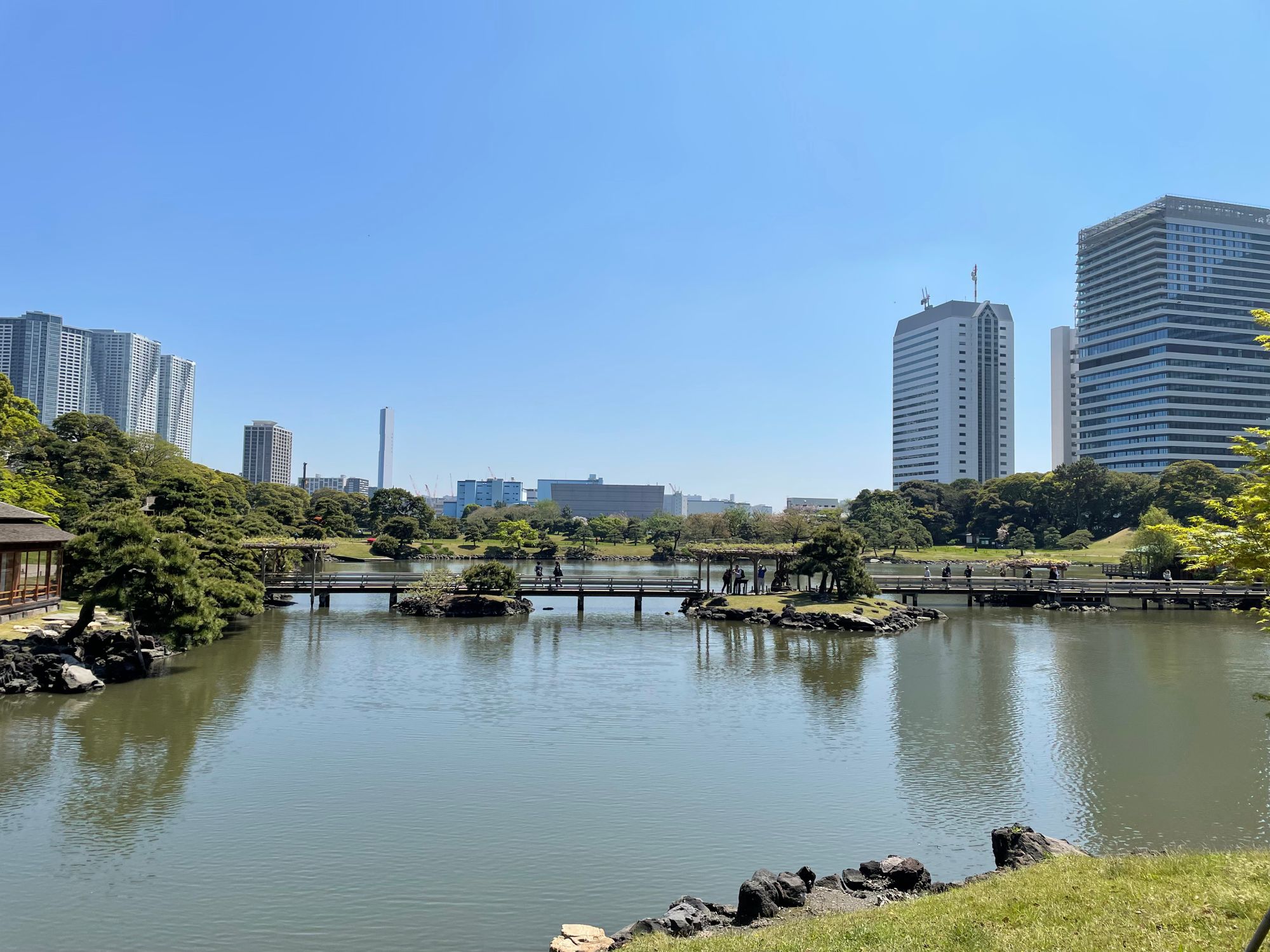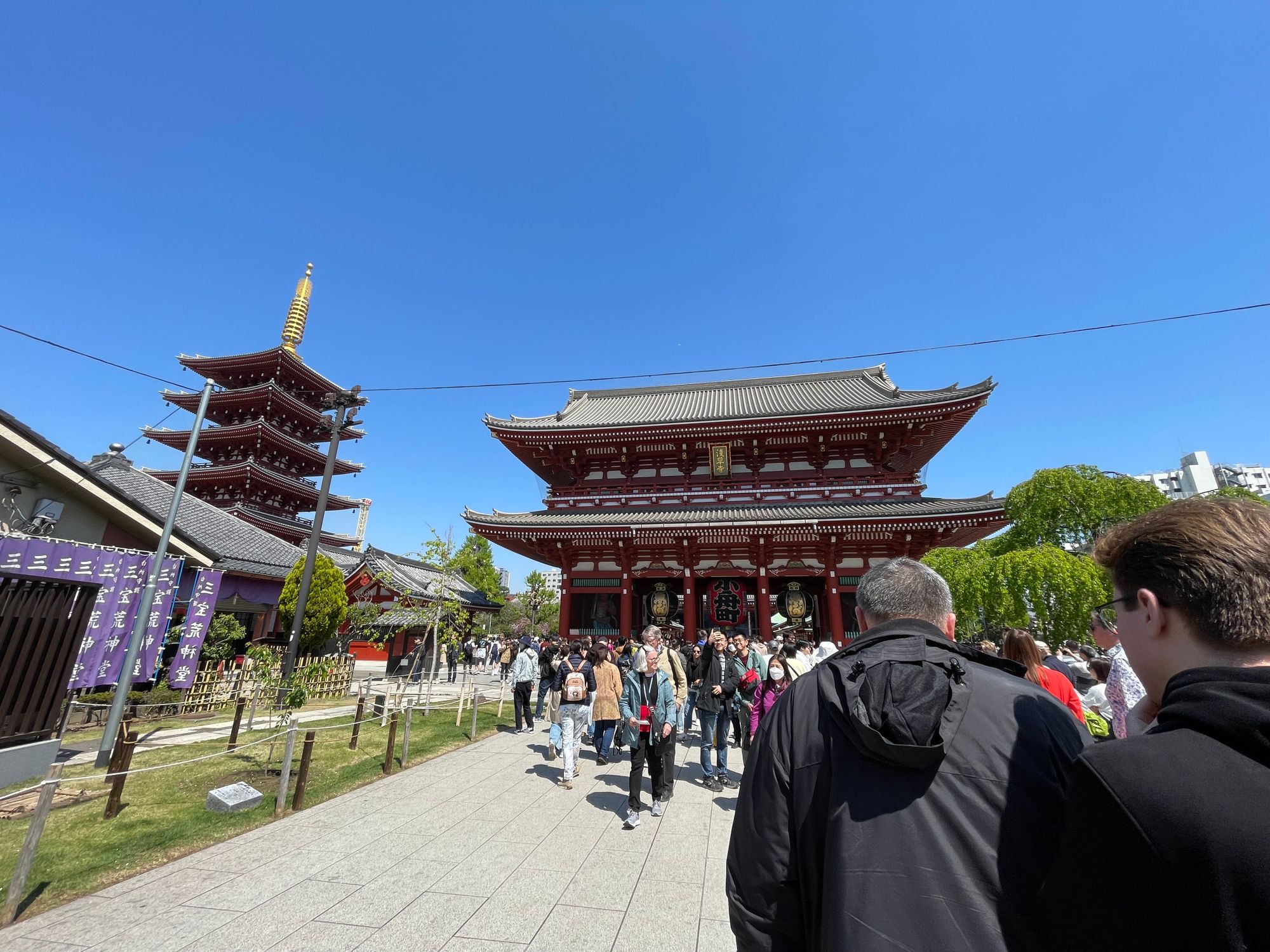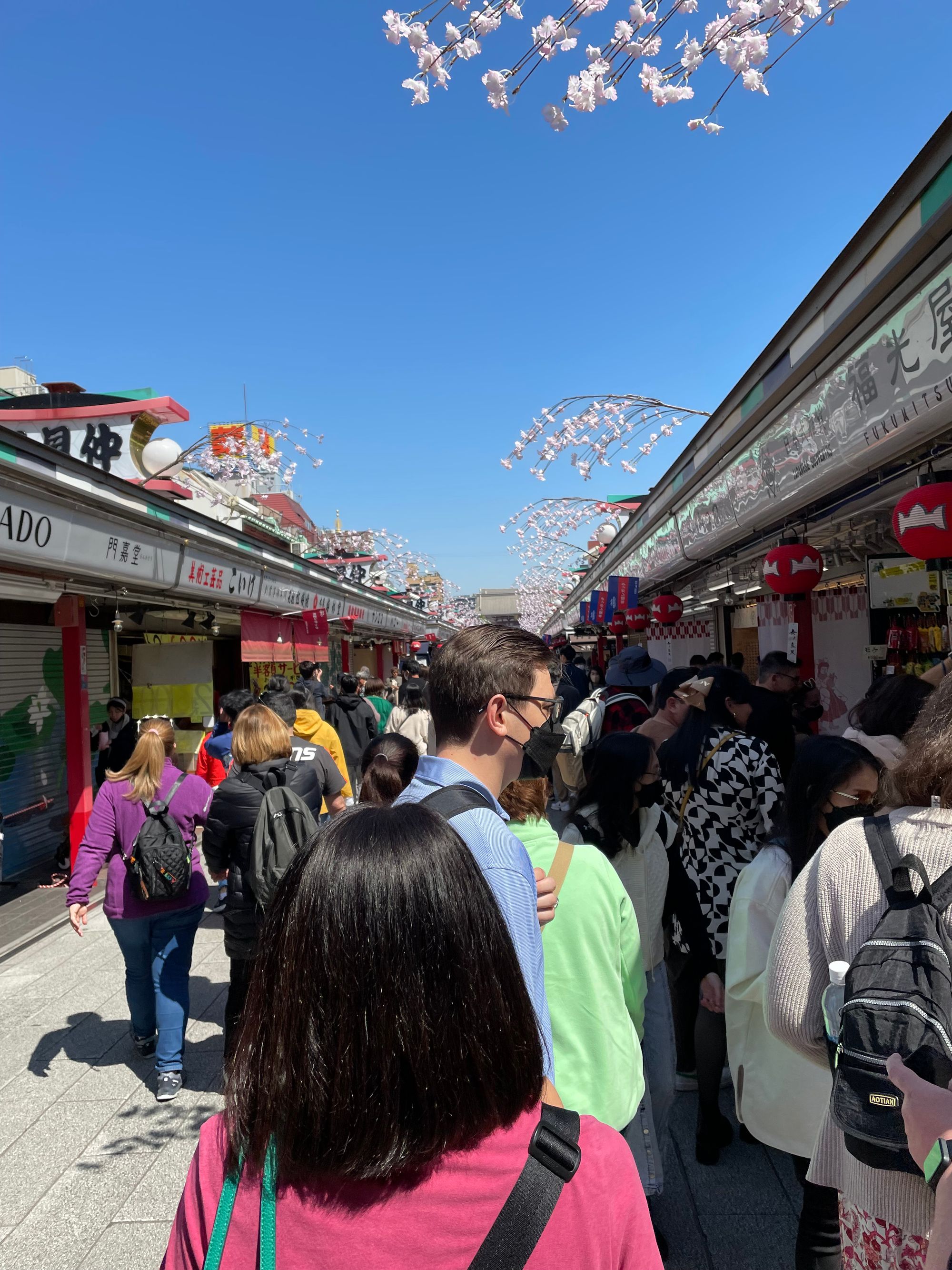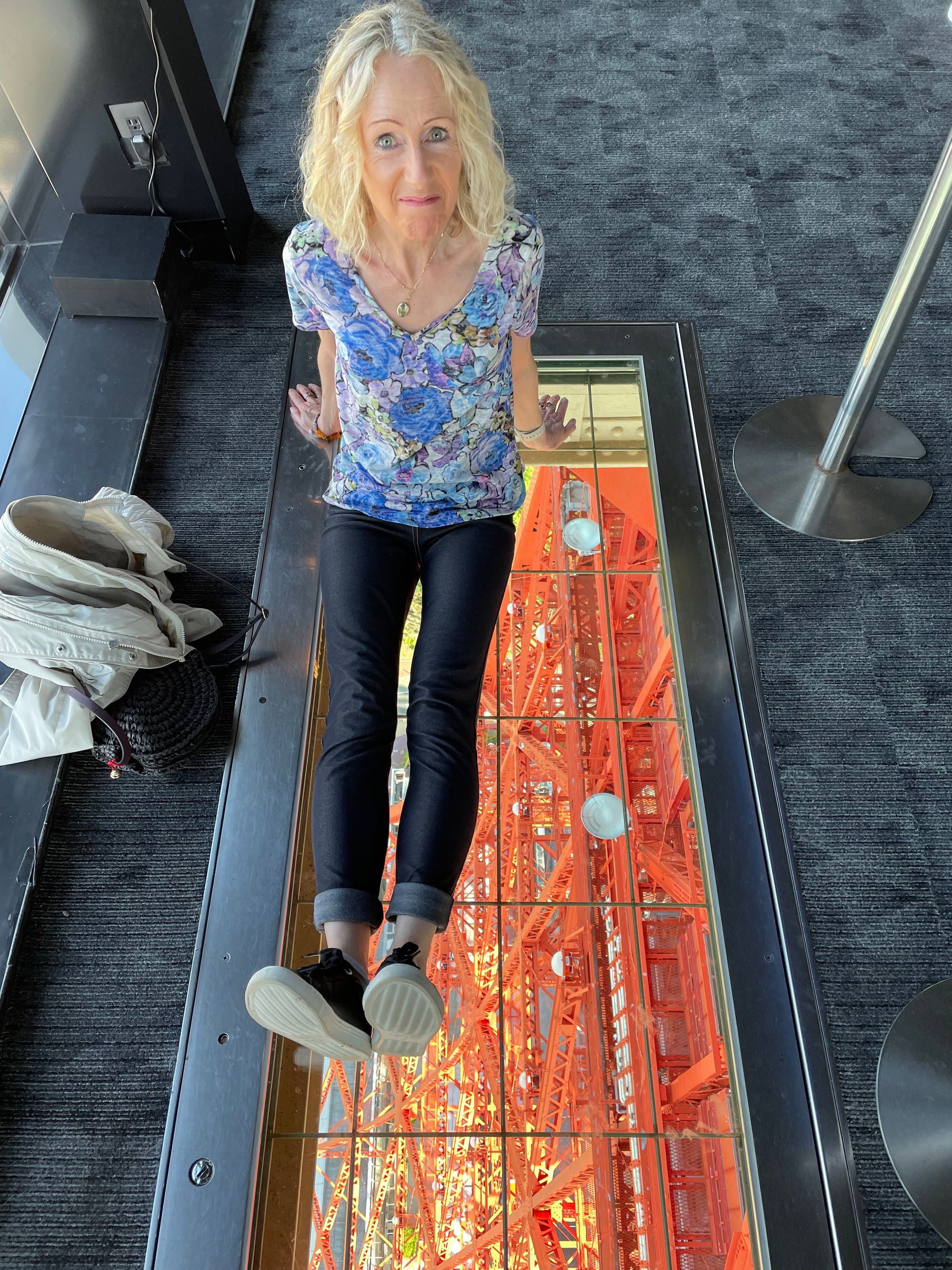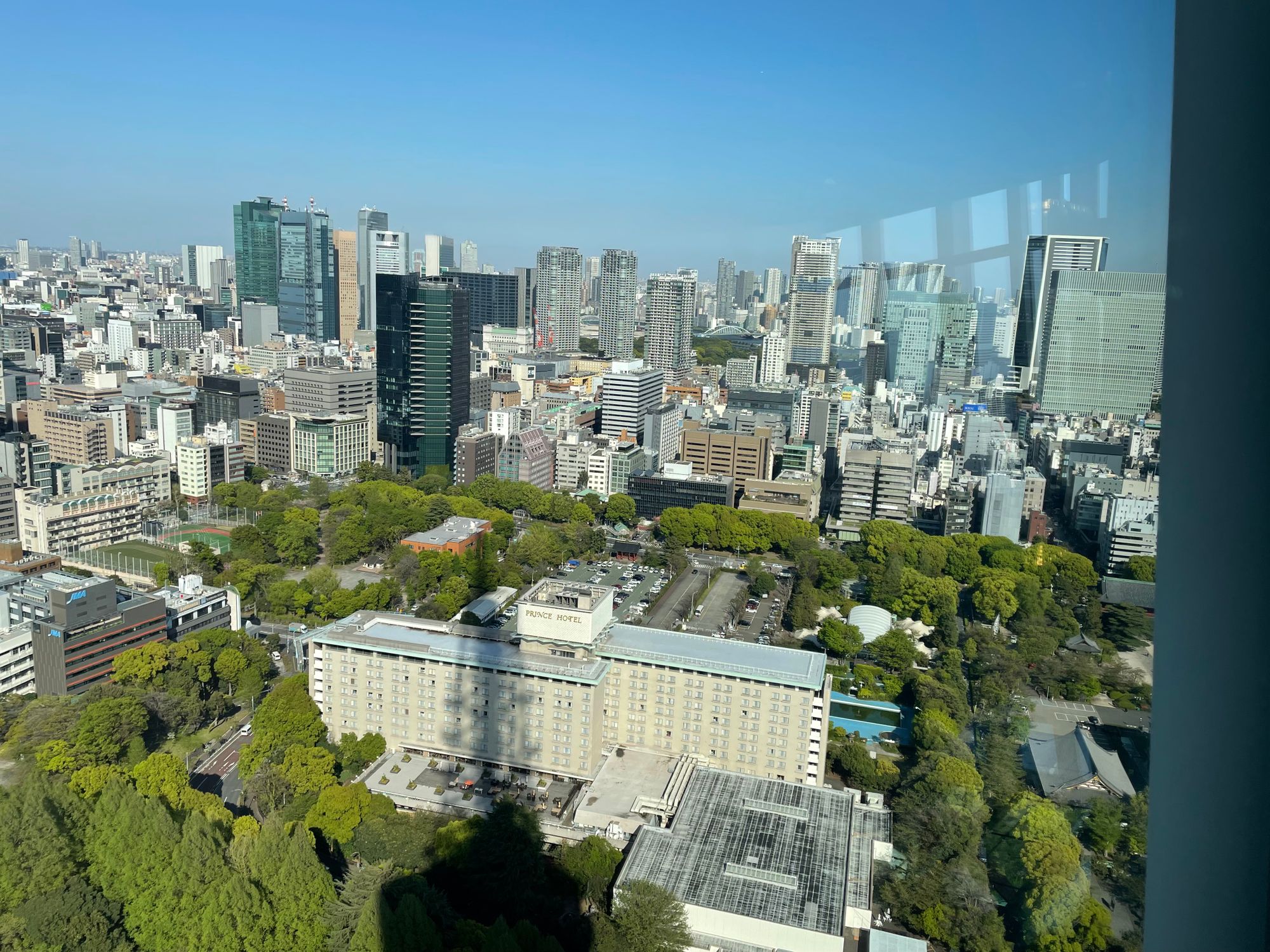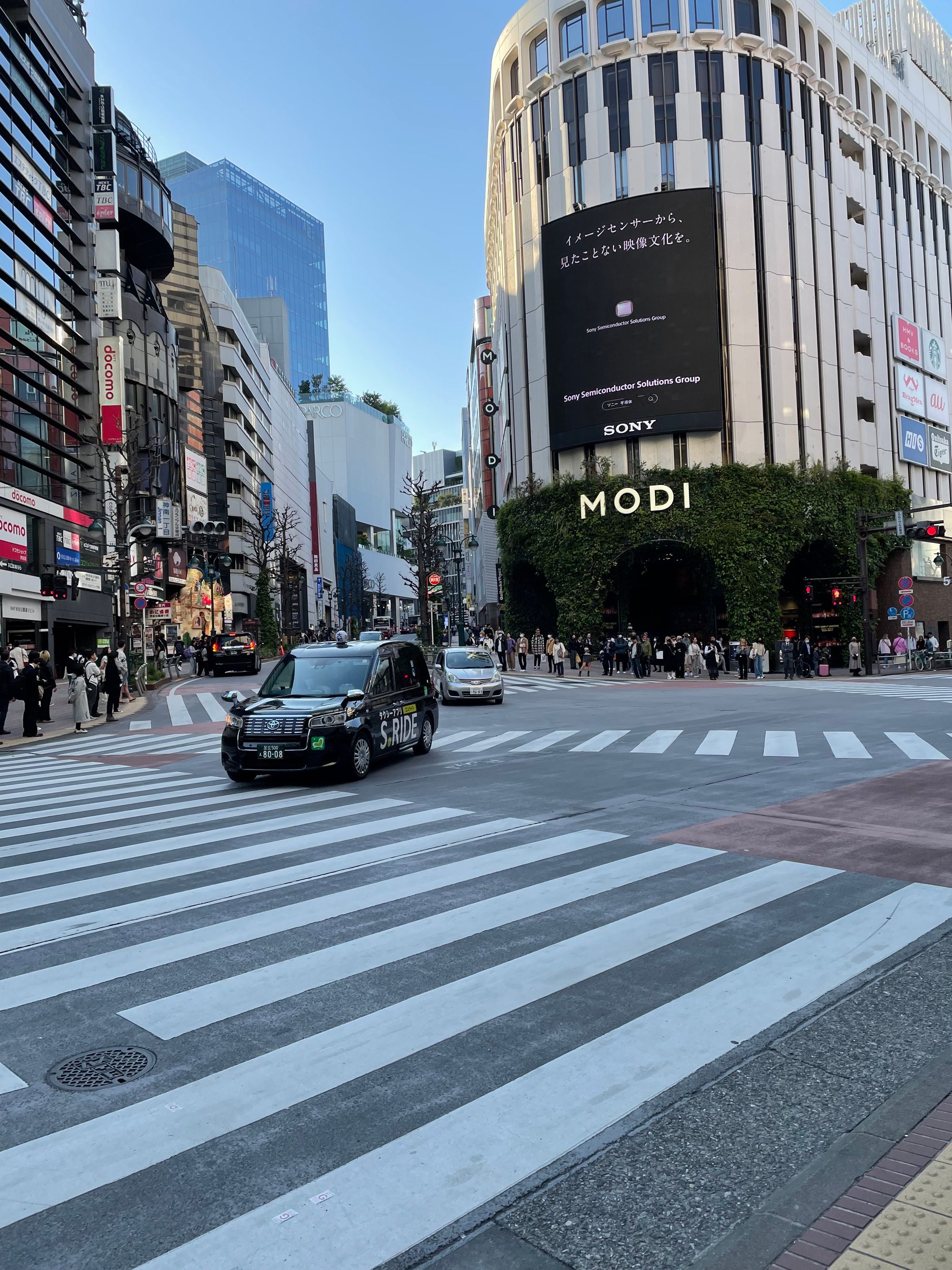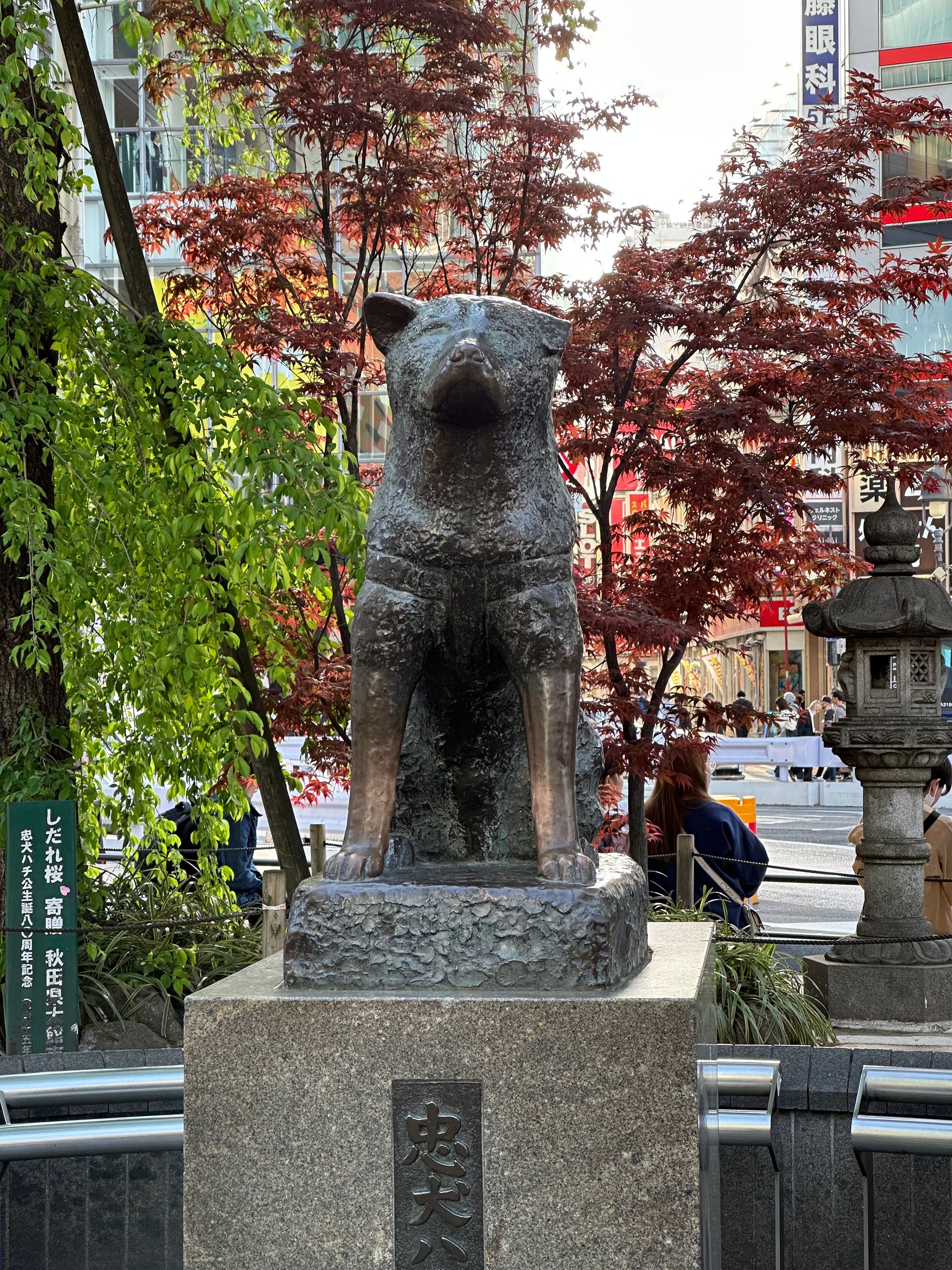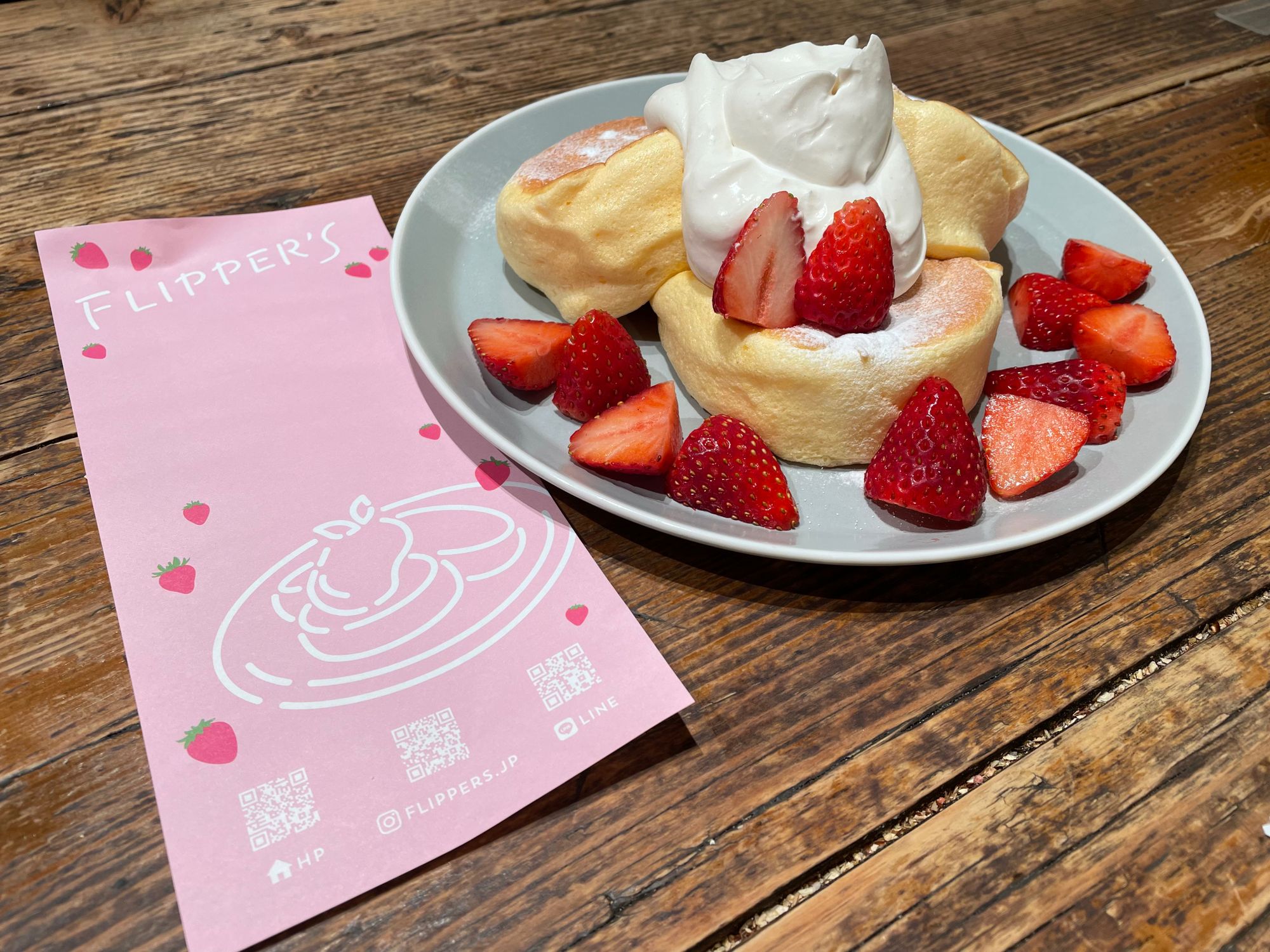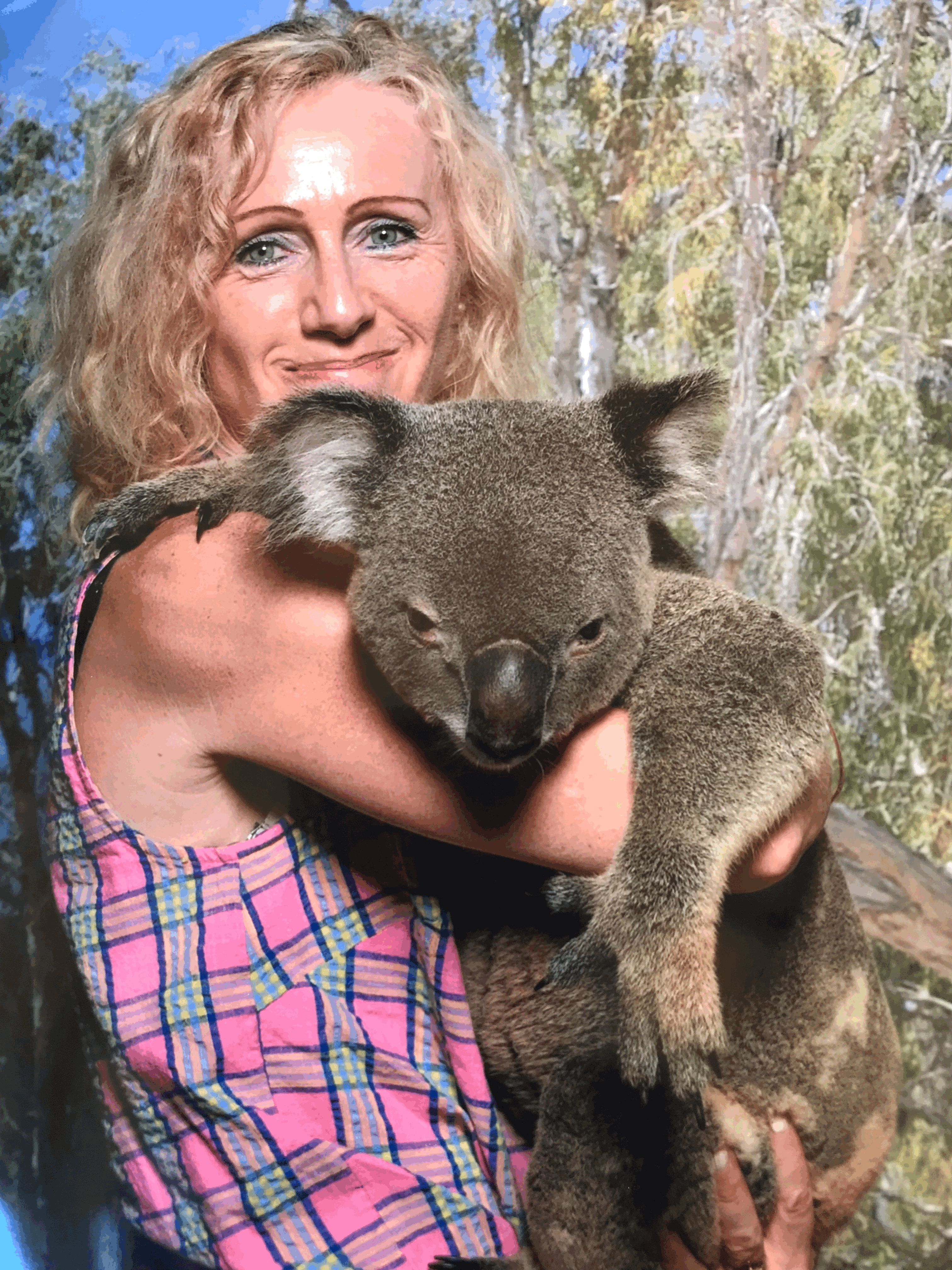My first day in Tokyo began after breakfast with a half-day personal guided tour around the city. I met up with my guide, Akie, in the lobby, who was born near Tokyo and now lives in Tokyo. She has travelled extensively and visited over 30 countries, even living in Australia for a time.
Tokyo is not only the capital of Japan but is also its largest city with a population of over 37 million. It is therefore an incredibly busy city with everything from large businesses to tiny bustling side streets selling grilled chicken on sticks. The city also has a surprising amount of green space in the form of parks and Japanese gardens. At night, the place really comes alive with neon lights and delicious aromas of local cuisine. There are plenty of opportunities to dive into the culture and mingle with both tourists and residents alike.
Akie and I set off to Hamarikyuteien gardens in downtown Tokyo which was only a short distance away on the subway. This green space is a little like Central Park in New York with its glistening backdrop of high-rise buildings. These gardens used to be kept for Imperial use only and didn’t open to the public until 1946. There is a Sumida River Line waterbus that runs to the gardens, but unfortunately it was fully booked so we were unable to get a trip on that.
There are some interesting things to explore in the gardens, including the duck hunting grounds and traditional duck blinds that were used by the Shogun, and an impressive 300-year-old pine tree. The gardens are beautiful, with an abundance of cherry blossom, and overlook a large tidal pond - I even saw a stingray! Then there is the floating teahouse where you can sit on tatami mats while enjoying a cup of traditional green tea.
My next stop was Sensoji Temple in the Asakusa district that was built for the Goddess of Kannon. This temple is Tokyo’s oldest temple and also the most popular and colourful one. There is a legend that says two brothers fished a statue of Kannon, the Goddess of Mercy, out of the Sumeda River. They returned the statue back to the river, but it always returned to them. Leading up to the temple is a long row of lantern lined shops that stretches over 200 metres, called Nakamise. These shops typically sell all manner of souvenirs from folding fans to local snacks. Several events are also held in the Temple area throughout the year. We had quite a fun time here, too, as you can get a written fortune from a wooden drawer and if you don’t like it, you can tie it to one of the omikuji trees in the hope that leaving a bad fortune behind will lead to a better one! We lit some incense sticks, too, and made a wish as we threw coins into the water. I also bought a little lucky bell charm here for 100 Yen.
After a busy morning it was time for some refreshments before going up the Tokyo Tower. The tower is a communications and observation tower in the Shiba-koen district of Tokyo and is 332.9 metres high, making it the second tallest building in Japan. The tower offers some great views over Tokyo and has several glass floors that you can stand on.
It was then off to Shibuya to see the famous crossing and statue of Hachiko the dog. Shibuya Crossing is the world’s busiest pedestrian crossing and is situated in front of Shibuya Station. It is estimated that around 1,000 to 2,500 people cross the crossing every two minutes during its busiest times. Once you have experienced the crossing there are cafes that overlook it so you can do a bit of people watching - if you can get a space by the window.
If you come to visit here, don’t forget to visit the bronze statue of Hachiko the dog who was a Japanese Akita and fondly remembered because he used to meet his owner every day after work at Tokyo train station and continued to do so for over nine years following his owner’s death.
My last couple of stops for the day included Flippers for pancakes and the Starbucks Tokyo Roastery. Pancakes have become one of the most popular desserts in Japan, with the souffle pancake being one of the most iconic. Flippers is a great place to sample the souffle pancake, as they are delicious here and simply melt in the mouth – the pancakes have more of a doughy cake consistency than that of a pancake, but they are light. There is also an extensive topping menu that has everything from strawberries and cream to egg benedict.
So later in the day, I arrived at the Starbucks Roastery, which is a unique experience over five floors and sells every kind of tea and coffee you could think of along with numerous food options, including pizza. The top floor even has an outdoor terrace area and even a cocktail bar. Apparently, the place gets extremely busy during the day, and particularly during the cherry blossom season, as there is a stream running through the middle of the road that is lined with cherry blossom trees. It is common for coffee enthusiasts to be seen queuing up outside to get into the roastery of which there are only six in the world: Tokyo, Seattle, Milan, Shanghai, New York, and Chicago.
